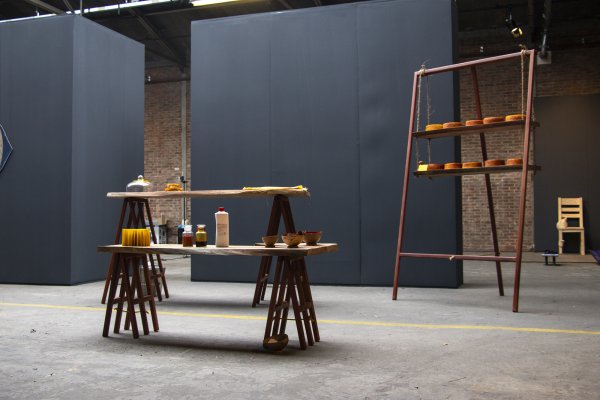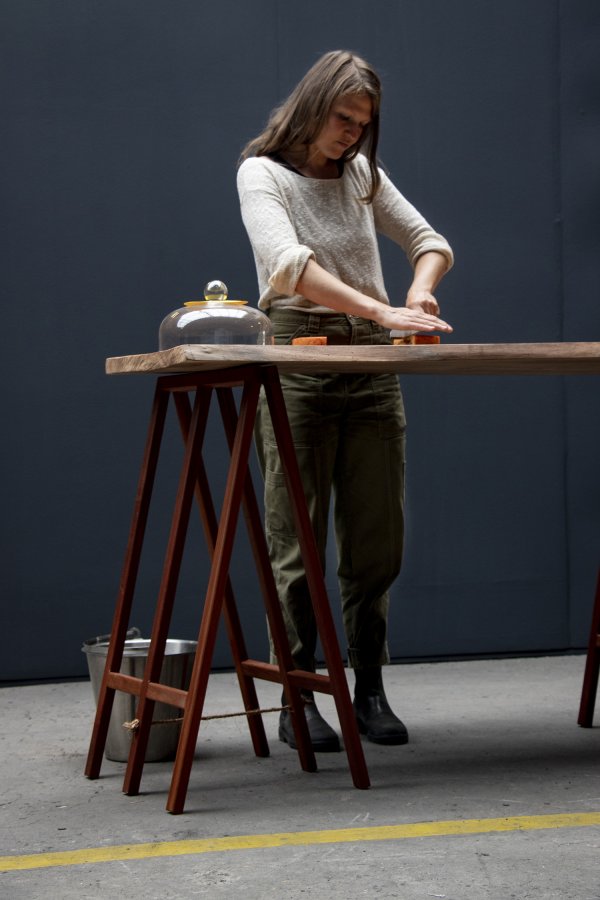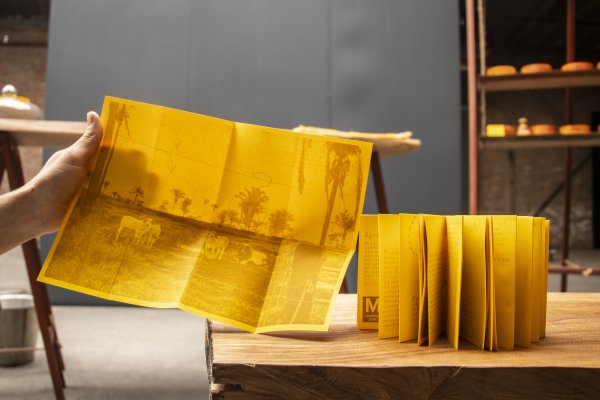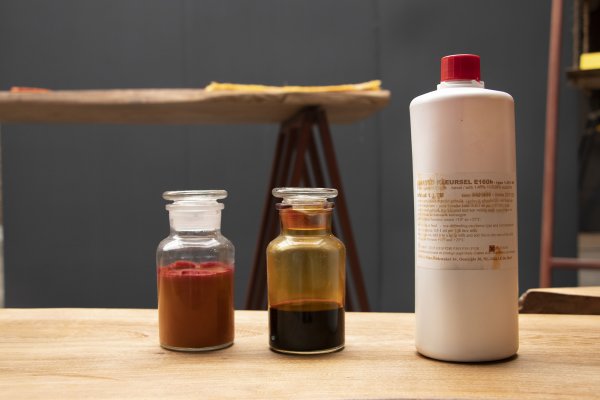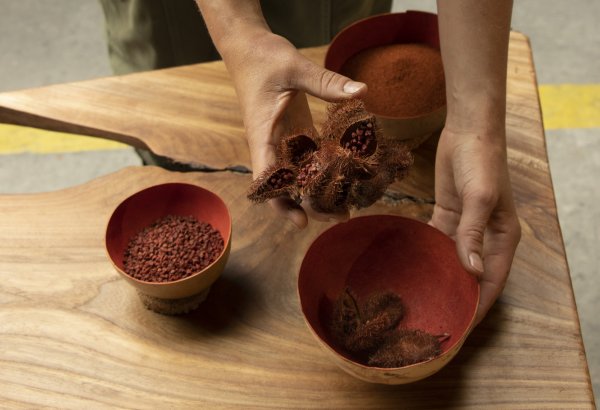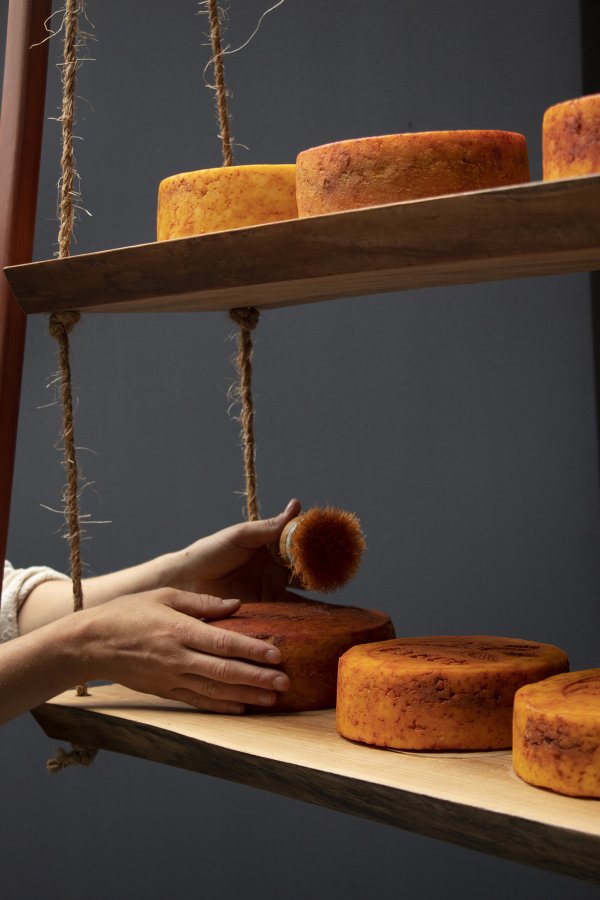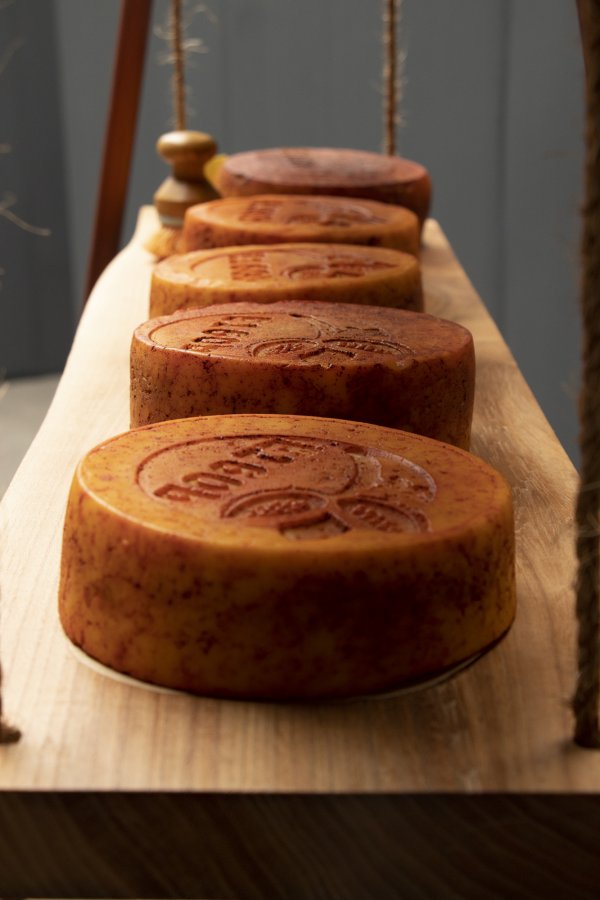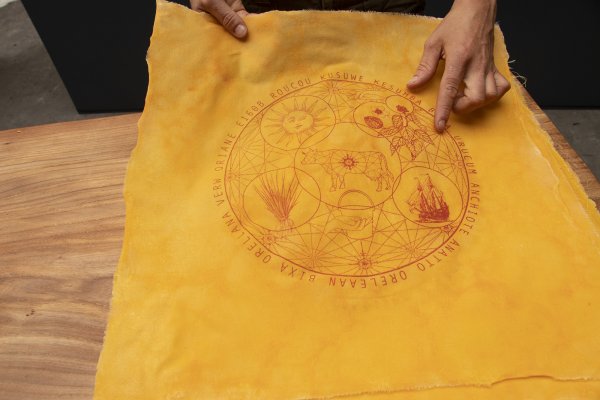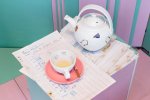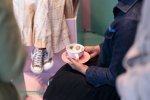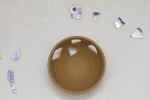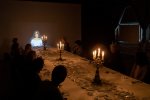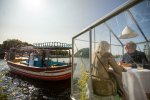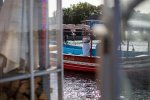TRACK & TRACE - ROUTE E160B
- Suzanne Bernhardt
Dans Track & Trace, je suis partie à la recherche des traces de Roucou, colorant rouge naturel qui nous relie à 5 siècles d'histoire : du colonialisme, des débuts du capitalisme à la chaîne alimentaire actuelle qui en résulte. Ce colorant est utilisé dans la production de fromage hollandais depuis près de 500 ans pour lui donner une belle couleur jaune. Lorsque les vaches mangent de l'herbe fraîche, celle-ci contient du carotène, qui émerge pendant le processus de fermentation du fromage, lui donnant ainsi une couleur jaune clair. En hiver, les vaches mangent de l'herbe sèche. Lorsque l'herbe est sèche, elle perd ses carotènes, ce qui rend le fromage d'hiver plus pâle. Afin de rendre le fromage d’hiver aussi coloré que le fromage d’été, on utilisait le Roucou (dénommé aussi anatto, kusuwe, orleaan, verv, urucum, bixa orellana) comme agent colorant. Ce colorant est encore en usage aujourd’hui sous l'appellation E160.
Avec la fromagère Jacqueline van den Berg, nous avons fabriqué un fromage dans lequel le Roucou revient comme une veine visible qui alimente ce faisceau d’histoires entre deux continents.
En rendant visibles ces traces du colonialisme, j'espère que nous apprendrons aussi à en reconnaître d'autres dans notre environnement quotidien et à voir où elles ont de la valeur et où elles n'en ont pas. Par ailleurs, ce fromage remet en question notre système alimentaire actuel, alimenté par un système capitaliste où la vitesse de production ne cesse d'augmenter et la transparence de la chaîne de production de diminuer. Nous perdons de vue l'origine des produits. Avec ce projet, j'espère susciter la curiosité autour des questions d’origine, d’interactions avec notre environnement et de responsabilité envers le vivant.
In Track & Trace I am looking for the traces of Roucou, the natural red colorant that connects us with 5 centuries of history in colonialism, the beginnings of capitalism and the resulting current food chain. This dye has been used in Dutch cheese production for almost 500 years to give it a nice yellow color. When cows eat fresh grass, it contains carotene, emerging during the fermentation process of the cheese, causing it to turn a light yellow. In winter cows eat dry grass, when grass is dried it loses the carotenes, making winter cheese paler. To make a stable product with the illusion of a summer cheese, Roucou was used as a colorant in cheese and it still does today! Then under the name: roucou, anatto, kusuwe, orleaan, verv, urucum, bixa orellana and nowadays known as: E160b –
Together with cheesemaker Jacqueline van den Berg, we made a cheese in which the Roucou returns as a visible vein that feeds this network. On the one hand, this cheese cuts in the traces of 5 centuries of history between two continents. By making these traces of colonialism visible, I hope that we will also learn to recognize other traces in our daily environment and see where these are of value and where they are not. Besides, this cheese questions our current food system, fed by capitalism where the speed of production is constantly increasing and the transparency of the production line is constantly decreasing. Losing sight of the origin of products. With this experience, I hope to stir up the curiosity around origin, the connection with the world around us and the responsibility back to what feeds these products.
- Guyane française
- Pays-Bas
- Mondriaan Fonds
- Kaasmakerij Landgoed Willybrodus
- Jaqueline van den Berg
- Zorgboerderij Noorderhoeve
- CARMA Art and Research Centre
- NL–lab
- Stichting Idees Clandestines
- Lucila Kenny
- Terry Blue Printing
- Bijgein Beeswax

